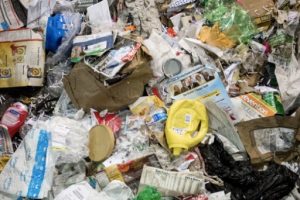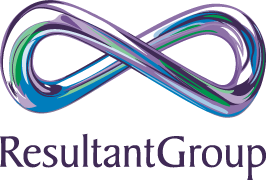Dave Gajadhar
An issue facing the industry and various levels of government is what CE means. The meaning and interpretation varies from one sector to another and from one region to another. For example, consumer goods, textiles, manufacturing, transportation, dairy, and food industry organizations would certainly recognize the original meaning and motivation of CE. Many of these organizations have been examining and adapting their business models accordingly for well over a decade and have to deal with the inconsistent regulations across multiple jurisdictions.
In the construction industry, the CE concept is now emerging and is associated with sustainability rather than value. Buzz words like ‘circularity’, ‘circular thinking’ and ‘being circular’ are increasingly used instead of ‘sustainability’ to be more social and business-friendly and to create a promise of new simpler sounding solutions to old unresolved problems, and these terms, buzz words and concepts add to and present other challenges.
Currently, there is a lack of clarity and consistency nationally around CE and Sustainability. This creates risk and sets up levels of confusion, frustration and costs to industry. It also leads to stagnation and inaction on the path to circularity and sustainability. For organizations to get to a higher level of circularity and sustainability, we must all collaborate transparently and work together to develop enabling regulations and standards across jurisdictions, so that there is consistency in understanding to act on relevant standards, changes, guidance, measures and reporting methods in a way that every stakeholder and participant can understand.
We need to move to more practical solutions and standards for reporting and measurements that matter to the general public and make practical sense. We need to design in reuse at the product concept phase with end of life costs assessments, including considerations to report against issues like emissions, water scarcity use and reuse, toxicity, contamination, landfill avoidance and resource depletion.
Reusing an existing asset enhances and maintains its value. It avoids the consumption of virgin resources and value-leakage from the asset through the recycling or disposal of the resources. If the reuse of all assets or products is not possible, care should be taken to ensure that end-of-life products do not cause unintended negative environmental, economic and social consequences.
Design for Reuse
Designing for simple disassembly, reuse and repurposing will allow products to be cheaply disassembled into constituent products at the end of use and made ready for the next use. Some products and assets can be surveyed in advance with a view to value-capture at the end of use, where we will be aware of the materials that have potential value and how they need to be disassembled without contamination and be conscious to not to reduce value during repair and refurbishment.

Adaptable design techniques can support several use functions without significant compromise. This includes the flexibility for the asset to accommodate different types of uses in the same spaces and the flexibility to easily accommodate changes to the original layout.
A durable asset design is one that can provide its intended function over a longer period with low maintenance and repair requirements. An asset that delivers income for longer and with much reduced in-use costs is clearly of superior value to the owner. Durable design involves the careful selection of construction products that can better withstand exposure to physical impact and are less likely to degrade.
The integration of existing technologies with emerging industrial and digital technologies can now be leveraged to gather a greater understanding of value as well as a wealth of practical information to support quality decision in close to real time. How data is stored and accessed varies and several systems are available on a web-accessible and updateable database accessed via a QR code or a static record stored on a chip on the product. Product codes could have an unlimited range of data: –E.G.
- Manufacturer details, installation date, ownership, product classification
- Cleaning and maintenance requirements, certification and standards performance
- Constituent materials, safety consideration and presence of any hazards
- Potential future uses and disassembly instructions
- Etc.
Corporate Role to Circularity
Corporate decision-making should integrate differential analysis, environmental and social costs to ensure value and relevance. A growing number of organizations have sprung to life over the past few years to shine a light on companies’ efforts to behave like good corporate citizens. But while delivering more clarity on corporate behavior, it is leading to a proliferation of conflicting frameworks, overwhelming some decision-makers, managers and staff with sustainability reporting fatigue.
A result of multiple and conflicting reporting frameworks, investors are increasingly struggling with how best to interpret sometimes contradictory and highly variegated reports and data. The challenge is how best to validate and interpret the data and information being produced. Companies are producing vast amounts of data and, at times, contribute very little to stakeholders, and maybe adding more confusion to the mix. From a societal point of view, companies must integrate environmental and social considerations into their decision-making so that they create and share value rather than destroy it.
Consistency and transparency are required when creating Business Responsibility Reports. These reports can be used for business model innovation for sustainability and circularity, which is still very much is fragmented. There are dynamic capabilities-based data sets and capabilities in most organizations, yet there is a lack of holistic approaches covering multiple stages of innovation across operations and supply chains. A strong integration across all stakeholder groups, participants, industrial and digital technologies across operations, and the supply chain is required to support and enable levels of circularity and sustainability.
The issues we face today are not much different from the problems faced during the 1930s and 1940s. The major difference today is that we have more data and access to real-time information. How we collect, use and value unbiased data will be the key to enabling a successful transition growth and profits during disruptions and unforeseeable events.
Making better use of what we already have is a lesson many of us learned from our parents and grandparents, who have lived through tough times, such as the Great Depression, droughts, shortages, and the energy crisis of the 1970s. Resources are scarce in any industry, and driving efficiencies through circular innovation is one of the best ways to glean a competitive edge.
A Sustainable Circular Economy
To achieve a truly sustainable circular economy, consumption and production practices would need to change together. A sustainable circular economy involves designing and promoting products that last and that can be reused, repaired and remanufactured. This retains the functional value of products, rather than just recovering the energy or materials they contain and continuously making products anew. I must point out that although we aim to be 100% circular and sustainable, based on what we know today, we must accept the fact that achieving 100% circularity is a goal and is not attainable any time soon.
New business models, such as shared services and closed-loop manufacturing based on demand and reusability, repairability and remanufacturing are better options. How we use resources has transformed our economy and society. Levels of circularity and reuse models offer us a chance to deliver sustainable and profitable benefits in the long term. Let’s not waste it.
Dave Gajadhar is an Advisor, Speaker, Educator, and an Advocate for Human prosperity and resource optimization at Resultant Group (Edmonton, AB), business modernization, resource optimization and transition advisors. He can be reached at (780) 483-4800, e-mail [email protected] or contact through Twitter: @dgajadar.
 Resultant Group helps companies to identify what matters to each of your stakeholders, participants and clients across your value chain. This enables your organization to optimize resources, monetize excess material and enable your sustainability reporting to convey the business’ unique story reflecting how your business is genuinely managed in a shared and circular economy. Join us at one of our regional workshops. Check out our schedule online at Resultantgroup.com and Companiesforzerowaste.com. Visit @ResultantGroup to learn more about advisory master classes. Stay up to date by subscribing to our newsletter and publications at www.resultantgroup.com.
Resultant Group helps companies to identify what matters to each of your stakeholders, participants and clients across your value chain. This enables your organization to optimize resources, monetize excess material and enable your sustainability reporting to convey the business’ unique story reflecting how your business is genuinely managed in a shared and circular economy. Join us at one of our regional workshops. Check out our schedule online at Resultantgroup.com and Companiesforzerowaste.com. Visit @ResultantGroup to learn more about advisory master classes. Stay up to date by subscribing to our newsletter and publications at www.resultantgroup.com.
